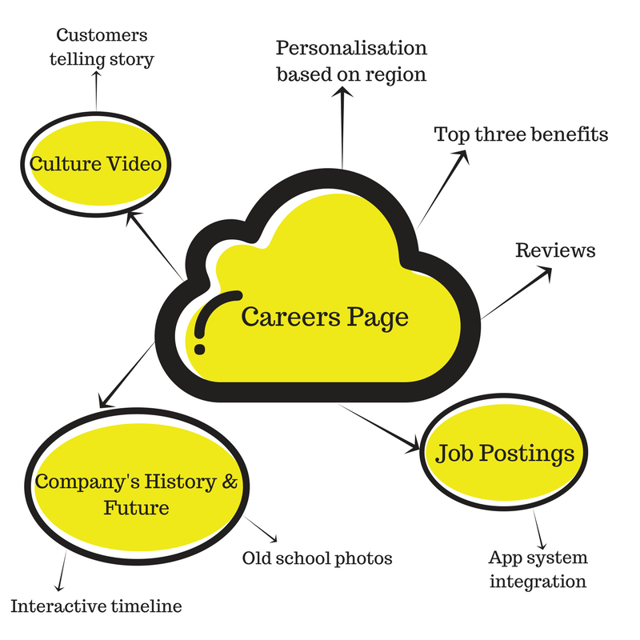The verdict is in: Websites matter. A website is a company’s number one marketing and sales tool that works on a continuous 24/7 basis.
The nature of inbound marketing dictates that you, as a business, provide value to your customers at every stage. In our online world, your potential customers are searching for solutions, and they want them now.
Your website must be able to provide the crucial information to help answer a prospect’s problem. The quicker and easier they can find the answer, the easier it is to convert those prospects into leads.
How often do you come across a website that seems like it should be able to solve your problem but you can't find the desired information? The reason for this, the majority of the time, is the design of the site and the structure of the layout.
How long was it before you clicked off that website and went elsewhere? Probably pretty quickly, and now that site now has to deal with their high bounce rate if they want to begin to see a higher conversion rate.
Traditional techniques of website design meant cramming in every seemingly logical page businesses could think of, with no means of understanding how the website flows or how it’s being consumed by users. The results are not pretty, as traditional web design often equates to headaches like:
The future of website marketing is driving design in a whole new direction; toward business growth, responsiveness and data-backed updates. A new methodology reigns supreme...
Growth-Driven Design (GDD)
But why should you adopt this website marketing technique and how exactly do you implement it?
Take a walk with us through the three phases of GDD and how they can revolutionise your website marketing...
Growth-Driven Design Methodology
The Growth-Driven Design methodology relies on segmenting the process of web design into the three phases:
1. Strategy
The strategy phase is designed to help develop a complete, empathetic understanding of the people who will be using your website and how you will aim to fit that website in and around their lives.
In this phase, you will need to utilise the following elements in the creation of your global GDD strategy:
- Goal setting: Just like you would do for your company, you need to set goals as to what you want to accomplish with your website and how this impacts both the user and the business.
- Personas: We’ve often spoken about the use of buyer personas within the inbound methodology. The principles expressed are just as important to growth-driven design. Personas will allow you to identify challenges, goals and needs from your potential users.
- Assumptions: This is where you would make considered, reasoned assumptions about who your personas are and why they’re in a position to turn to your business. Furthermore, this element tackles how your website fits in with that and even addresses assumptions about how your business is perceived.
- User research: Create a journey map to determine where an online visitor will go before, during and after when using your website. This will help you create a more logical understanding of your website’s wireframe.
Once you’ve put together your global strategy using the above elements, you are then able to create a wish list.
Your wish list consists of brainstorming, with your team, a list of 75 – 200 different ideas for your website. These ideas need to be anything that will drive value to both the business and the consumer. You can even break-up page ideas into smaller elements like the example below:

2. Launchpad Website (using Pareto Law 80/20)
The next stage is the completing the Launchpad website. The goal of this is to have a site launched quickly so that you can start collecting real user data rapidly in order to perfect your website as you learn.
The typical launch pad website is launched in one month, putting it well ahead of the three to six-month delay traditional web projects encounter.
Now you need to prioritise the value-driven elements that you brainstormed in the first stage. You do this using the 80/20 rule also known as the "Pareto Principle" (or “Pareto Law”):
80% of the effects come from 20% of the cause
Using this rule, you define only 20% of wish list elements and separate them into two groups - the “must have” and the “nice to have”. Your “must have” list is then pushed right to the front of the queue. Those must have, in turn, elements that form the main menu and leading parts of your launchpad website.
3. Continuous Improvement
Once you start collecting your real user data from your launchpad website, you are now in the stage of “continuous improvement”.
At this point, you can decide what the highest impact items are that you can build for optimal results.
In GDD, the best way to achieve this is through the website hierarchy. In providing focus and giving you clear expectations you can measure the progress to goals in how your website is evolving.
The website hierarchy is as follows:
- Audience: Does the website have a good consistent flow of organic visitors?
- Value: Do the visitors find value in what you’re offering? Could it mean that some elements need to be added, amended or removed?
- Usability: Can users find this “value” easily and quickly on your website? Are they left feeling delighted?
- Conversion: Are you able to shorten the steps that lead to the conversion process more effectively?
- Repeat Visitors: Are users coming back to your website on a regular basis or has something caused them to drop-out?
- Personalising: Do you need to start personalising certain aspects of your website more to better suit your visitors?
- Assets: Does your website hold valuable assets (such as offers like eBooks, free consultations etc.) that create leads?
It’s no secret as to why growth-driven website design is the best way forward. We’ve put together a useful table that compares the two methodologies:
|
METHODOLOGY |
COSTS |
TIME & RESOURCES |
DECISION PROCESS |
RESULTS |
|
TRADITIONAL WEB DESIGN |
Large up-front costs |
Need to re-allocate large resources and time for the process |
Based on data assumptions |
Website is left static for 2+ years until next re-design process |
|
GDD |
Costs spread out over time |
Quicker launch means less time and resources needed |
Based on real, organic data |
Website is being continually monitored and improved |
In comparison to traditional website marketing techniques, GDD mitigates the risks of overspending for a smaller return on investment, with a process that will provide reliable results over a month-on-month growth period.
You end up with a quality website that not only improves over time but is far less costly than traditional website marketing techniques and will greatly improve your sales and marketing efforts. Which puts your online-based lead generation and business growth on a completely different plane.
CONCLUSION
In essence, GDD is the future of website marketing techniques. It offers a sleek, faster web design product focused towards lowering cost, time and budget. If your website is in need of a revamp, then jump onto the growth-driven design wagon and place your firm ahead of the trend.
Through GDD, you’ll benefit from a smarter, more optimised website that will work for you, not against you when it comes to generating more leads and growing your business.




